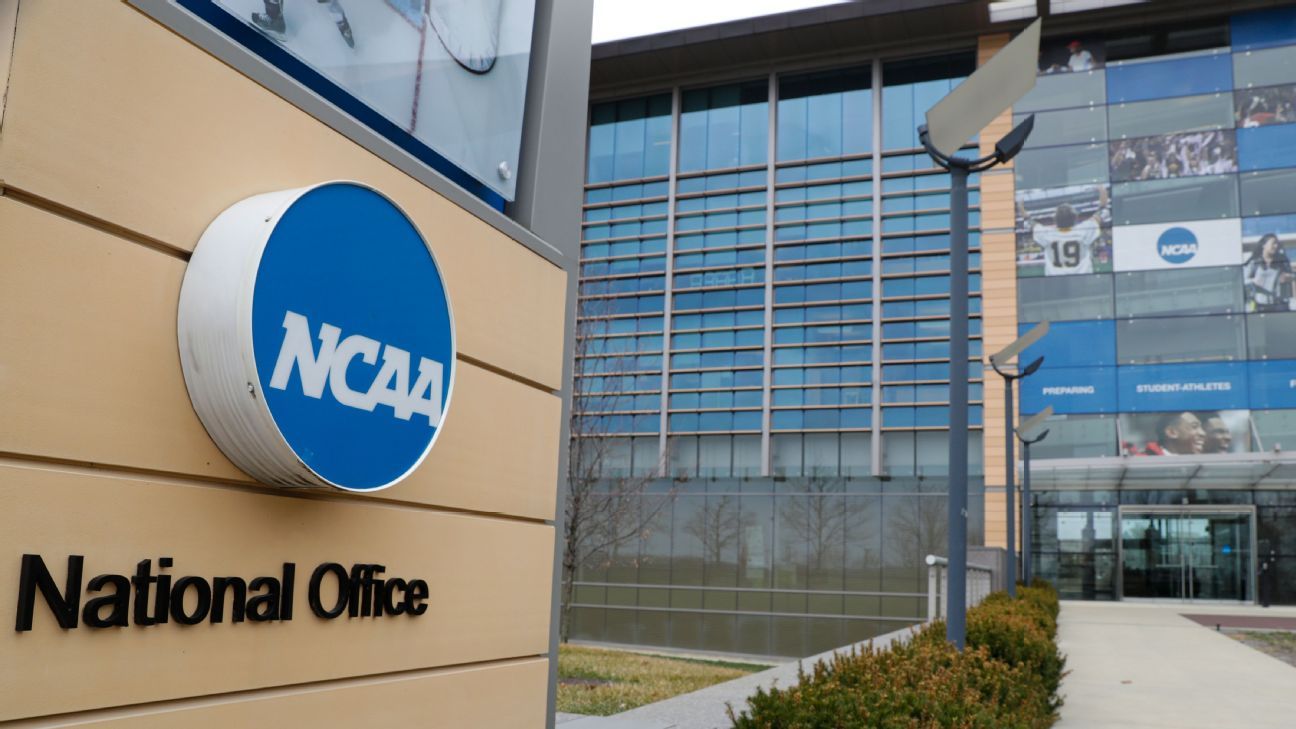During an NCAA special convention held Monday to discuss major changes to the way the association governs college sports, a large majority of Division 1 members present said a proposed new NCAA constitution needed only minor changes to earn their support.
Roughly 2,500 representatives from schools and conferences attended Monday’s virtual meeting to learn about the proposed changes and provide feedback. In an unofficial straw poll conducted by the NCAA among Division 1 representatives, 85% said they would support the changes after minor revisions, while 10.5% said it would need major revisions and the remaining 4% said they supported the constitution in its current form.
The proposal to change their constitution, which follows in the wake of significant legal and political losses for the NCAA this past summer, was designed to try to simplify what college sports leaders have called a complex and outdated rulebook by taking significant authority away from the NCAA’s national offices and giving those responsibilities to its separate divisions, conferences and member schools. In the new proposed model each division would be responsible for setting its own rules for things like enforcement processes and regulations on how athletes can make money through third-party endorsements.
Changing the constitution is the first step in a two-step process. If it’s formally adopted with a vote in January, each of the NCAA’s three divisions will be responsible for rewriting their rules to fit the new framework. NCAA president Mark Emmert called Monday’s meeting an unprecedented step by the organization and called the new constitution “scaffolding for rebuilding the NCAA in a new and exciting fashion for the 21st century.”
“I think we clearly have some tweaking to do, some modest improvements,” said NCAA board member and former Secretary of Defense Robert Gates, who spearheaded the group who wrote the new constitution. “Overall, the straw polling seemed to reflect general satisfaction with where we are.”
The proposed changes include significantly reducing the size of NCAA’s Board of Governors from more than 20 members down to nine and trying to ensure that athletes have a bigger voice and a vote on the board in future decisions. Some conference commissioners, including Greg Sankey of the SEC and Keith Gill of the Sun Belt Conference, said they were concerned that the constitution didn’t go far enough to reduce the board’s duties along with its size. Sankey said members have been frustrated with the lack of input they can provide to key decisions such as legal strategy and the lack of transparency the board has demonstrated in explaining its choices.
Others, especially representatives from Division 2 and 3 schools, shared concerns that the new constitution will fall well short of it creating the “transformational change” that it set out to make.
Betsy Mitchell, the athletic director at Caltech, said she felt the motivation to make major changes came “from a place of fear” and that “money and power are the organizing principles at play here.” Mitchell said those priorities don’t line up with the majority of the membership that doesn’t compete at the highest levels of college sport.
Several members of the constitutional committee acknowledged that revenue allocation was the most contentious part of their discussions, but that they fought hard to make sure that smaller schools would not be harmed financially by future changes or have their concerns drowned out by Division 1 schools. Emmert said while the constitution itself might not bring about radical change, he believes it sets the stage for each division to create the type of structure that works best for its needs moving forward.
“I don’t see this document in and of itself as radically transformational,” Emmert said in response to Mitchell’s comments. “But … it creates the structure around which each of the three divisions can now go forth and create rules, bylaw structures, that that can based upon their unique circumstances have been as transformational as they choose to be.”
Some advocates for change have suggested that the NCAA’s best path forward would include separating FBS-level football from the rest of the association. Amy Perko, the CEO of the Knight Commission, which suggested that change last year, told ESPN that “the problem has never been the principles of the NCAA constitution. The problem has been putting the principles into practice.”
“The financial framework for Division I sports, particularly FBS football, is one of the most significant areas that needs to change,” she said. “Both to control runaway spending seeking competitive advantages, and to require more funding be directed to support athletes’ education, health, safety and well-being.”
Emmert said that while the new NCAA structure would allow Division 1 members the authority to separate football from its other sports, he did not believe that there was much support for that plan among the member schools.
The specific details of how each division will choose to use its new authority will likely take shape in the first half of 2022. NCAA members will have until mid-December to provide feedback and suggest changes on the proposed constitution. NCAA members are scheduled to vote on the revised constitution on January 20, 2022. If it passes, each division will have until August to changes its rules to make sure they are aligned with the new constitution.


